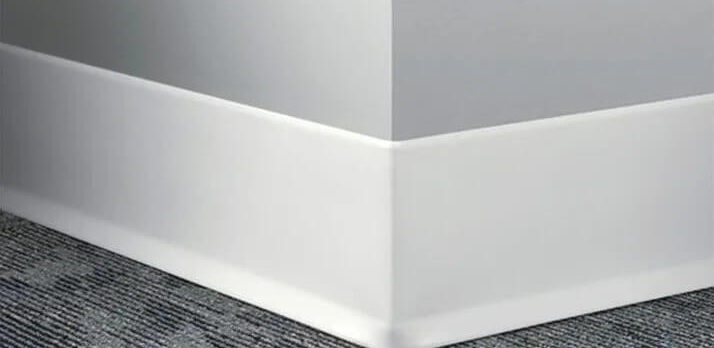
Choosing the right molding and trim is essential to giving your house a unified and elegant look. Even while they might not seem like much, these little elements have a big impact on how a room feels overall. The trim and moulding you choose will frame your living areas, draw attention to architectural features, and unify your interior design plan, whether you’re renovating an older home or adding the finishing touches to a new one.
The wide variety of materials, styles, and finishes available can be intimidating for individuals who are new to the home remodeling industry. With helpful tips and insightful information on selecting the best trim and molding for every area in your house, this guide seeks to make the decision-making process easier. You may improve your living area’s visual appeal and use by making thoughtful decisions about these crucial components. This guide will help you choose comfortably and confidently, from knowing the many kinds and materials to ensuring they complement your current décor.
What are Floor Trims and Mouldings?
Moldings and trims are necessary flooring accessories to smoothly transition your floor between levels, along stairs, and against walls. These last details are essential to giving your flooring a polished and unified appearance.
Medium-density fiberboard (MDF), rubber, vinyl, and other materials are only a few of the many shapes and materials available for transition components. These adaptable trimmings provide practicality and visual appeal to your area and are simple to place wherever needed.
What are the differences between Floor Trim and Moulding?
Although they have different uses, floor molding and trim are sometimes mistaken. The term “trim” describes the material used to finish the borders of windows, doors, floors, walls, and ceilings.
Conversely, floor molding is a particular kind of trim that gives a room a decorative feel. Baseboard moulding, for example, can improve a room’s appearance by smoothly joining the walls and floors, giving it a unique and refined aspect.
How to Choose Floor Transitions and Baseboards?
A number of crucial considerations need to be taken into account when choosing the ideal finishing touch for your walls and flooring.
Location: The placement of the moldings and trimmings should be the primary consideration. While some solutions are more appropriate for particular places, others function well in a variety of settings. Starting with the location allows you to weed out unsuitable options and concentrate on better ones.
Floor Type: The kind of flooring you have is another important consideration. Your molding or trim should ideally match your flooring. Fortunately, most flooring materials may be matched with trimmings made of rubber, vinyl, or MDF.
Size: Another important factor to take into account when selecting transition items is size. Finding baseboards, casings, and other trimmings for your walls and floors that are both the proper size and aesthetically acceptable is crucial.
Style: Finally, think about the look that best fits your space and your personal tastes. Before deciding, bring samples home to see how various moldings and trimmings seem in person.
You can pick the ideal wall and floor finishing touch that will improve the overall appearance of your room by carefully weighing these criteria.
Types of Floor Moulding & Trim
For a smooth and seamless transition between various flooring surface types, floor transition strips are necessary. There are many different types of floor molding and trim available, and each has a distinct function. We’ve listed some typical moulding and trim types that you might encounter below.
Quarter Round Trim
A short baseboard that resembles a quarter of a circle is called a quarter round. Simple and adaptable, this kind of trim is frequently utilized as wall trim or in conjunction with a taller baseboard to give your house a distinctive and personalized appearance.
When there is an expanding gap between the wall and the floor, quarter round trim is especially helpful. Having trim to fill in this gap will help keep your floors looking good all year round because most flooring materials expand and contract in response to temperature fluctuations.
Quarter-round trim works well with vinyl, carpet, wood, and laminate flooring, and it’s perfect for floor-to-wall transitions and as a baseboard complement.
T-Molding
Think about utilizing a T-mold while moving between two floors that are level with one another.
T-molding creates a smooth transition between two hard surfaces, such wood and tile, or between different kinds of wood planks or tiles. This kind of molding maintains a unified appearance while offering a seamless transition that is aesthetically pleasing.
Ideal Use: To create a seamless transition between two hard surface floors, use T-molding.
Flooring Compatibility: It works well with laminate, wood, and vinyl flooring.
Floor Reducer Trim and Molding
For seamless transitions between floors of different heights, reducer components are necessary. When one area has tile flooring and another has hardwood, they are especially helpful. Reducers can provide a smooth transition between the two surfaces and eliminate any possible trip hazards.
When one level is higher than the other during a floor-to-floor transition, reducers work well. They work well with a range of flooring materials, such as rubber, wood, laminate, vinyl, and carpet. A secure and aesthetically pleasing transition between rooms in your house can be achieved by integrating reducers into your flooring plan.
Floor Thresholds and End Caps
Thresholds and end caps, like reducers, help to make the transition between levels easier. Nevertheless, thresholds and end caps have a stair-step form that seamlessly joins floors of different heights, in contrast to reducers, which offer a gentle slope. These trimmings work especially well to provide a smooth and organic appearance when integrating various textured floors, such as carpet to hard surface floors.
Because of their similarities, end caps and thresholds can be used interchangeably. The main difference between them is how they look; end caps have a more squared-off edge, whereas thresholds frequently have a rounded off square edge.
Any two levels of varying heights can be connected with these adaptable transition pieces. They work well with wood, laminate, vinyl, and carpet, among other flooring materials.
In conclusion, end caps and thresholds are crucial elements for creating a smooth and unified appearance when moving between floors. They are a useful addition to any flooring installation because of their practicality and visual attractiveness.
Stair Nose Trim
As the final detail on a stair step’s edge, the stair nose trim adds both style and protection. In addition to protecting your stairs from damage, it also softens sharp edges and improves safety by creating a non-slip surface.
Stair nose trim not only serves a practical purpose but also gives your staircase a refined and unified appearance. You can easily choose a choice that matches your flooring and your own style thanks to the large selection of types and designs available.
For absorbing foot activity and preventing damage, the stair nose trim is perfect for use on the stair step edges. It is a flexible and useful option for any staircase because it works with a variety of flooring materials, such as vinyl, wood, and laminate.
Baseboard Trim
As the focal point of any house or workplace, baseboards are an essential component of trims and moldings. They provide each area a refined appearance in addition to filling up the expansion gap between the wall and the floor. From short, basic baseboards to elaborate crown moldings, baseboards come in a wide range of designs that can match any type of room. No matter the style of the room, this adaptable piece gives it a sense of completion.
In order to provide a smooth transition between walls and floors, baseboards are usually placed at the base of the wall. Vinyl, carpet, wood, laminate, tile, rubber, and other flooring materials can all be used with them.
Bullnose Trim and Molding
Bullnose trim is the greatest choice to think about when converting your tile flooring to the wall. Bullnose trim, which is made of porcelain or ceramic tile and has a rounded top, is placed over or adjacent to existing tile to provide a smooth 90-degree transition. Since this kind of trim is usually sealed, it is long-lasting and simple to maintain.
Like baseboards, bullnose trim is frequently utilized at the base of walls to provide a seamless transition from the floor to the wall. It works with a variety of flooring materials, such as laminate, vinyl, wood, and tile.
Cove Base Trim
Tile cove base trims are a fashionable and useful accent to any area. Cove base trim, like bullnose trim, has a curved bottom that smoothly slopes into the tile flooring’s edge, making the transition from floor to wall seamless. This design fulfills a practical role in addition to adding a sense of elegance.
Cove base trim is renowned for its longevity and ease of upkeep in addition to its visual attractiveness. Because of its sturdy design, it is perfect for high-traffic locations where hygienic conditions are crucial, such restaurants and commercial buildings.
For those challenging corner parts, we provide cove base corner pieces to further simplify installation. These components save you time and work by guaranteeing a smooth and polished finish.
The greatest places for cove base trim are at the base of walls, where floor and wall tiles meet. It works especially effectively in places with plenty of traffic, including restaurants and shops. It is a flexible option for a range of areas because it works well with tile flooring.
All things considered, cove base trim is a useful and fashionable way to switch from tile floors to wall tile. It is a popular option for both residential and commercial areas due to its longevity, ease of upkeep, and compatibility with tile flooring.
Installing Trim and Molding
Whichever choice is selected, the procedure for installing molding and trim is the same. Depending on the molding’s position, material, and preferred installation methods, variations may occur.
Floor Transitions
You can pick between two installation options for floor transitions, such as thresholds or t-moldings.
To guarantee a strong bond, the first method is to use construction glue to adhere the trim to the subfloor and then press a heavy object against it. As an alternative, you can affix the piece straight to the subfloor using a nail gun.
Base Trim
Baseboards and quarter-round trim can be installed in a very similar manner.
To guarantee a precise fit against the wall, start by cutting the trim as needed with a miter saw. For a seamless finish, cut the trim at an angle when working around edges or corners.
Quarter-round trim should be nailed to the wall in 10-inch increments using a nail gun. For extra stability while installing baseboards, attach the trim to the wall in 16-inch increments.
These procedures will help you install base trim and floor transitions in a polished and professional manner.
Installation of Cove Base or Bullnose Trim
Installing cove base or bullnose trim is similar to laying floor tiles. The first step is to apply mortar to the wall and attach the trim. To get a smooth finish, grout the joints after giving the trim a full day to set.


